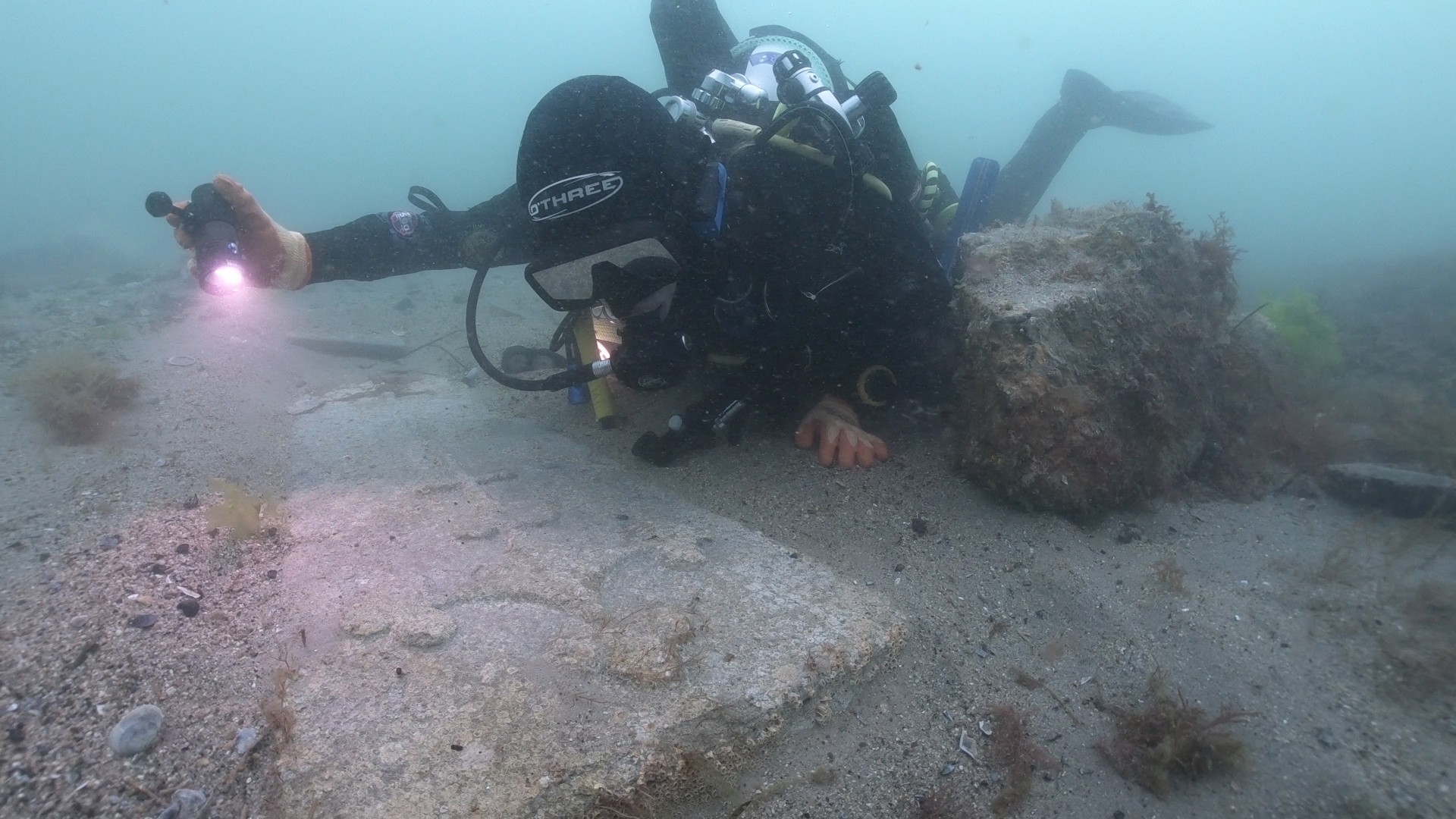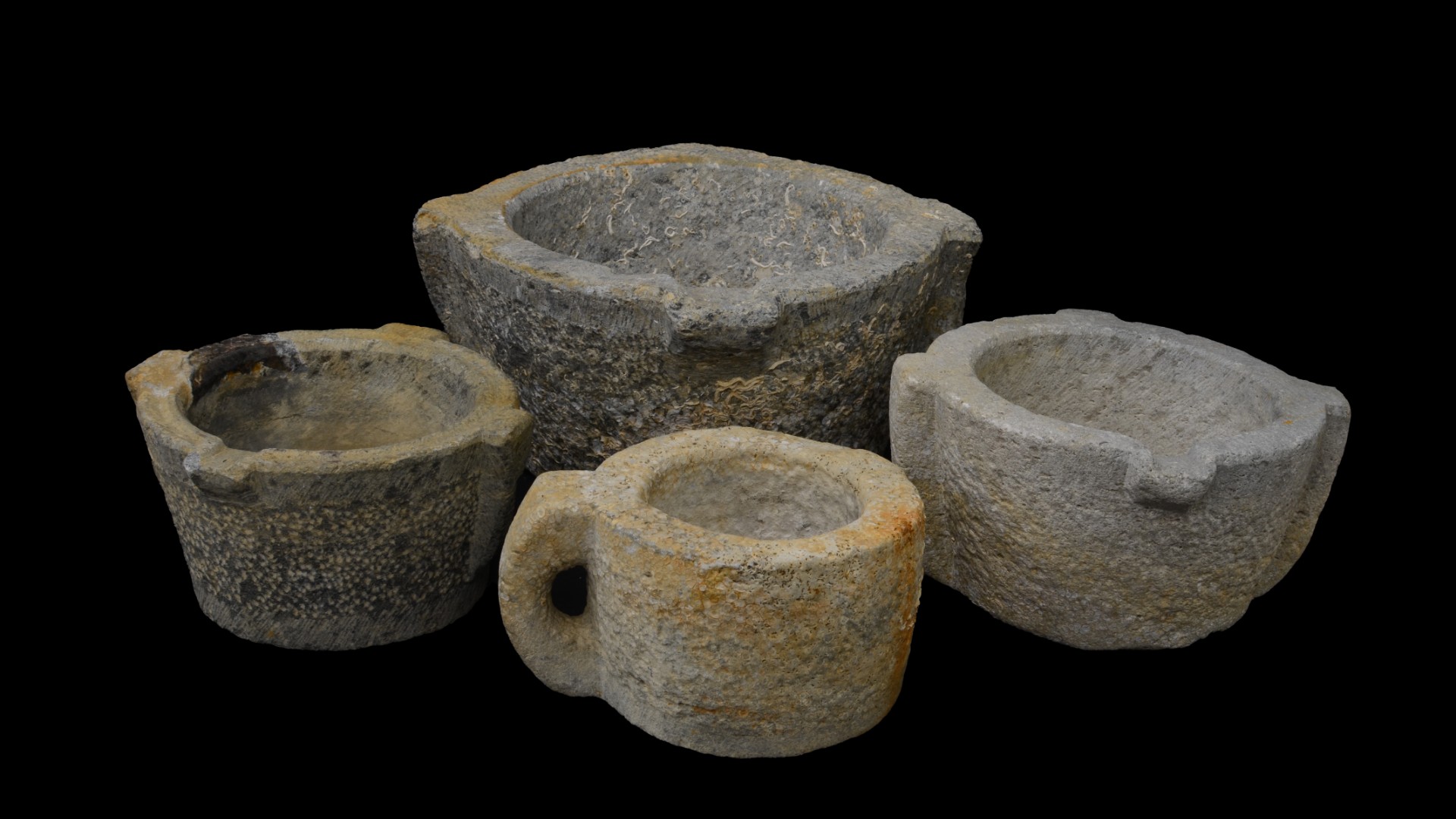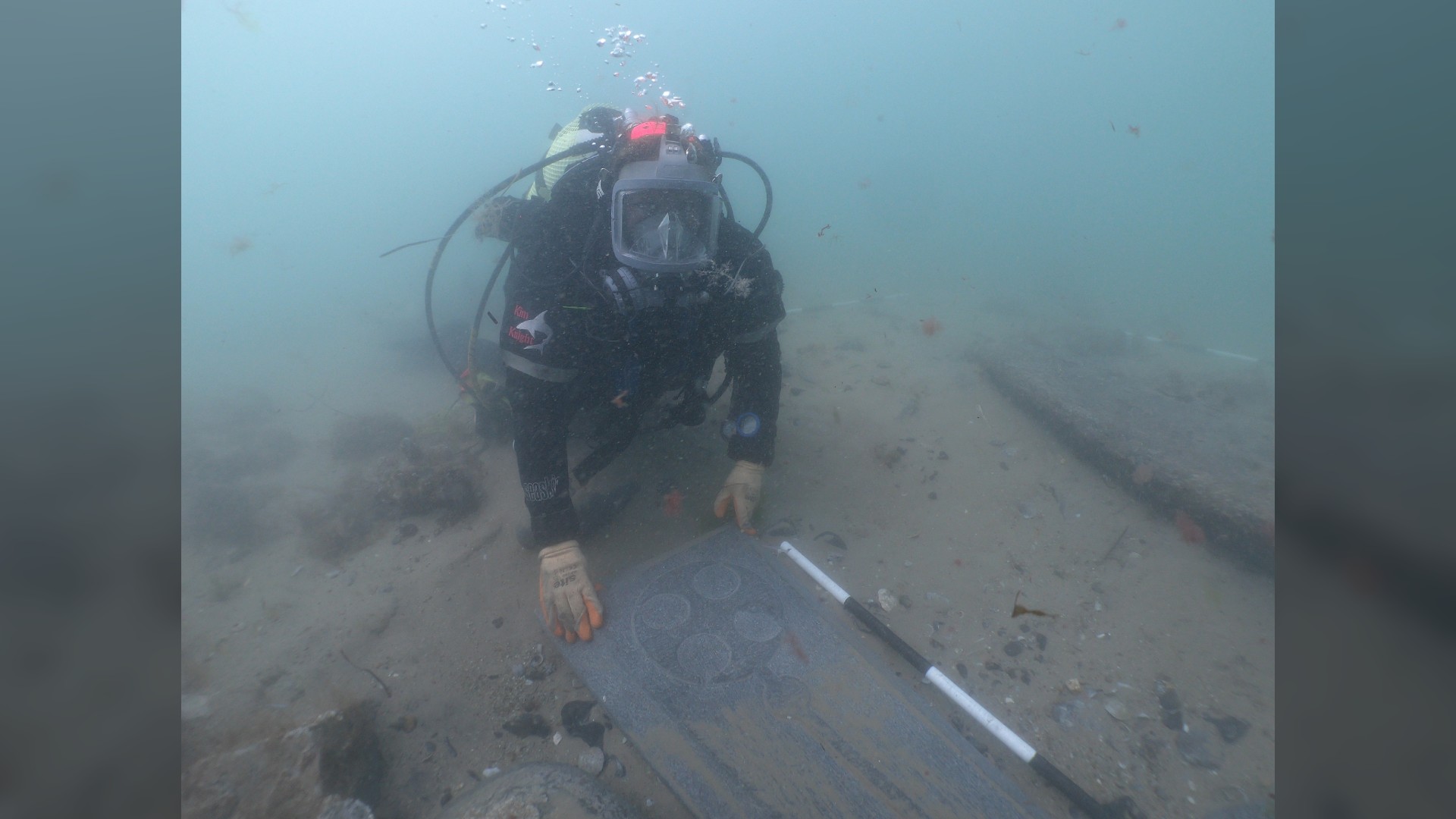13th-century 'Mortar Wreck' is England's oldest-ever preserved sunken ship
Divers are racing to save the shipwreck from seafloor decay.

A medieval shipwreck, possibly doomed by bad weather and its heavy load of stone cargo, including mortars, cauldrons and gravestones, is now getting star treatment as maritime archaeologists begin efforts to preserve its remains off England's southern coast, amid revelations that it is the oldest nearly-intact shipwreck in the country.
A team led by dive-boat captain Trevor Small, who discovered the 13th-century cargo ship's wreck in 2019, and Tom Cousins, a diving and maritime archaeology officer at Bournemouth University in the U.K., started a new series of dives last week at the "Mortar Wreck" near the southern English seaport of Poole.
The wreck earned its name from the many "mortar" bowls, used for grinding and made of local stone, that the ship was carrying when it sank; more than 20 mortars of different sizes have now been found there, and it's likely there are many more.
Despite surviving the centuries, the remains of the Mortar Wreck now face a new obstacle. The shifting sands at the bottom of Poole Bay recently uncovered several parts of the wooden hull, which will likely deteriorate quickly now that they have been exposed to the water, Cousins told Live Science.
Related: Sunken 17th-century 'pirate ship' discovered, alongside gunpowder-packed grenades


In response, the divers are "sandbagging" the exposed portions of the hull — that is, covering them with sandbags so that sand from the seafloor will accumulate over them and protect the wreck until maritime archaeologists can return to the site for a full excavation, he said.
The latest dives come as the British government has granted the wreck the highest level of official protections, according to the heritage agency Historic England.
Get the world’s most fascinating discoveries delivered straight to your inbox.
The agency noted that the Mortar Wreck is the oldest-known wreck in English waters where hull remains are visible. A few older wreck sites date from the Bronze Age (2500 B.C. to 700 B.C.) — such as at Salcombe in Devon, as BBC News reported — but their wooden hulls are rotted away and only items from their cargoes remain.
Heavy cargo
Skipper and diver Trevor Small first detected sonar indications of the Mortar Wreck beneath his boat in 2019. He told Live Science that he'd regularly made the same voyage over several years, but had seen nothing there before, so it was likely that a storm had exposed the wreck by shifting the sands in Poole Bay.
"Usually something like that becomes uncovered due to bad weather — and then when there's a new structure on the bottom, it gets inhabited by fish life very quickly," he said. "So that makes you think that there is something there."
Investigations showed the ship was carrying mortars, stone cauldrons, gothic stone gravestones and raw marble from the nearby Isle of Purbeck — an area famous for the quality of its limestone, Small told Live Science.


It's not known exactly why the vessel sank, but it's likely that it foundered after a sudden change in the weather.
"They must have had a very heavy cargo, and it may be that they were just getting clear of the protection of the coastline when they were hit by a changing wind," he said.
Poole Bay in that area is not very deep — the Mortar Wreck lies at a depth of about 32 feet (10 meters) below the surface — and so the ship may have grounded in the bad weather and started taking on water until it sank, Small said.
Medieval shipping
Tree-ring analysis of the exposed timbers show they were made of Irish oak — a tree species that also grows in England — that had been felled between 1242 and 1265, during the reign of the English King Henry III, Cousins said.
Related: $17 billion shipwreck near Colombia is remarkably preserved, new photos reveal
It's rare for submerged wood to survive for very long; and the wreck's remarkable state of preservation seems to be, in part, thanks to the soft sand on the floor of Poole Bay, which covered the hull soon after the sinking, he noted.
Initial analysis showed that the ship was probably about 65 feet (20 m) long, and equipped with a single mast. Such ships would have been relatively common along the English coast during the Middle Ages, while their shallow drafts — the relatively small distance between their waterline and keel, or cargo hold — meant they could also navigate along the country's major rivers, such as the Thames, Trent and Ouse. "They were the transit vans of their time," Cousins said.
The Mortar Wreck was probably intending to carry its load of Purbeck stone to cities and church establishments farther east in England when it sank, he said.
In addition to its many mortars and cauldrons, the wreck holds several ornate and highly-polished gravestones made from Purbeck marble, Cousins said. The gravestones themselves are very rare, with designs of Christian crucifixes within a circle; and archaeologists at Bournemouth University say the unusual stones have rewritten experts' understanding of just how such grave markers were produced, according to a report by the Dorset Live news outlet. For example, they show that two different gravestone designs were in use at the same time, rather than at different times in history.
Cousins said that artifacts from the Mortar Wreck will go on display at the newly-rebuilt Poole Museum as they are recovered and conserved.
Two other "exceptionally rare shipwrecks" near the Isle of Wight in the South of England received government protection at the same time as the Mortar Wreck. One is thought to have been involved in the 1653 Battle of Portland, a naval engagement during the First Anglo-Dutch War; the other is thought to be the remains of an armed merchant ship from the same period.
Originally published on Live Science.
Tom Metcalfe is a freelance journalist and regular Live Science contributor who is based in London in the United Kingdom. Tom writes mainly about science, space, archaeology, the Earth and the oceans. He has also written for the BBC, NBC News, National Geographic, Scientific American, Air & Space, and many others.


